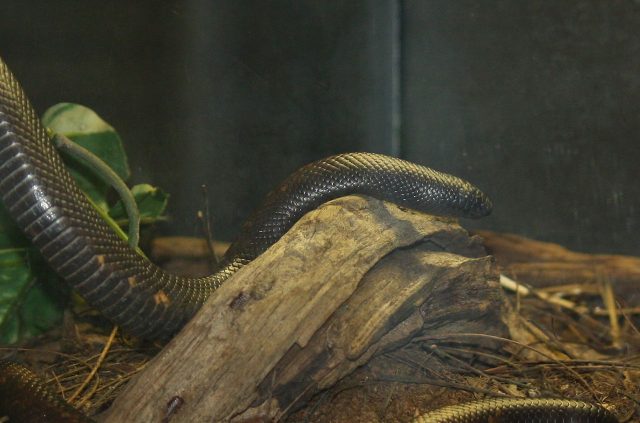Type the name of the breed you're looking for below
[wpdreams_ajaxsearchlite] Don't see the breed your're looking for? Click here and let us know!
Calabar Python
| Place of Origin and Range | The Calabar python is a non venomous boa species endemic to west and central Africa. |
| Description | Adapted to burrowing, the body is cylindrical with a blunt head and equally blunt tail. The head is covered with enlarged shields. The shape of the tail closely resembles that of the head which may be a defensive adaptation, meant to confuse an attacker. The body is muscular and strong. The eyes are relatively small and usually a dark reddish-brown colour. The pupil is round. The colour pattern consists of a dark brown or black ground colour speckled with red, yellow and/or greyish spots. The tail may be ringed or have a partial ring of bright white scales. |
| Morph Patterns Available | Yes |
| Adult Size | Can grow up to 3.5 feet(1.1m) |
| Accommodation | The species usually occurs in sparse, open woodland such as dry deciduous forests, woodland or shore line. Plenty of branches for climbing. Leafy plants will provide the required humidity and hides. You will always want to include a large dish for bathing and soaking in to improve shedding. Always include a day basking spot at 80'F(27'C). Along with multiple hides. Minimum 2 x 2 x 4 feet for an adult. |
| Lifespan | Can live 15+ years |
| Feeding / Diet | Preys on small rodents and shrews, often invading their burrows in search of them. It may wait for the adults to leave the nest, after which it will enter and to eat whole litters at a time. Typically eats mice and rats. |
| Breeding | Oviparous, with females laying eggs.These are relatively large, weighing as much as 50 g (2 oz) each. Usually, only one or two eggs are laid, rarely three. Nevertheless, they may represent up to half of the female's body weight. The young hatch after six weeks of incubation, and begin to feed two or three days after hatching, usually after they first shed their skin. |
| Other Considerations | Snakes are relatively hardy low maintenance animals when kept in the correct environment, and require little day to day care other than feeding and cleaning out the tank as required. However, like all animals, they can still become sick or injured despite our best intentions to prevent this. |



